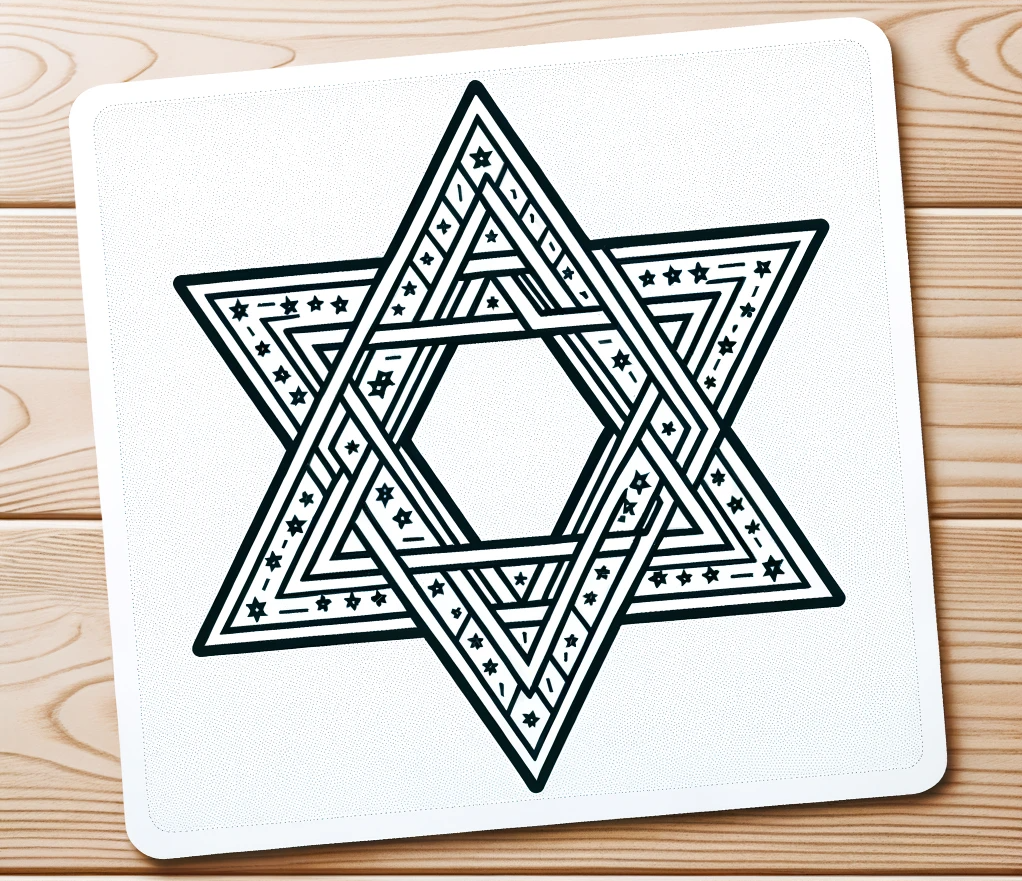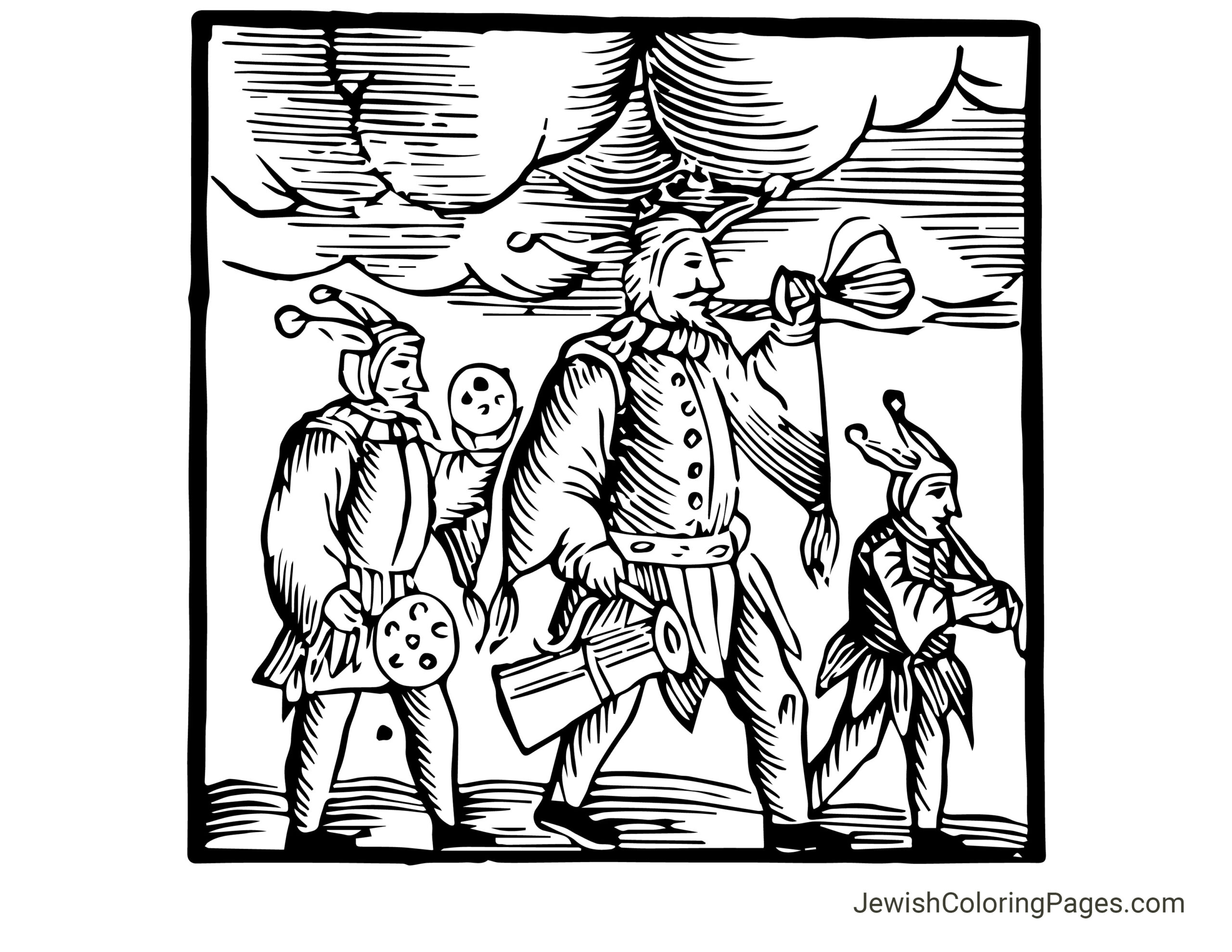This is a stylized representation of a scene based on a real 1657 woodcut, which depicts a medieval Purim celebration. The central figure in the scene is dressed in regal, somewhat exaggerated attire, characteristic of the period’s sense of fashion, which included puffed sleeves, a prominent ruff, and a large hat. This costume likely represents King Ahasuerus, from the Book of Esther, which is read during the Jewish festival of Purim.
Flanking the king are two other figures, possibly meant to portray court jesters or characters from the Purim story, such as Mordecai and Haman. These characters are dressed in costumes that are similarly indicative of the era, with one carrying what appears to be a noisemaker, known as a “gragger” in the context of Purim, used to drown out Haman’s name during the reading of the Megillah.
The woodcut style of the image is characterized by stark contrasts and bold lines, which would have been carved into wood for printing. This illustration captures the essence of Purim celebrations, which often include dressing up in costumes, performing plays and parodies called “Purimspiels,” and reveling in a carnival-like atmosphere. This historical depiction would be colored with a relatively muted palette, using colors that would have been available during the medieval period, to maintain a sense of authenticity.
Here is the original engraving, courtesy Wikimedia.


